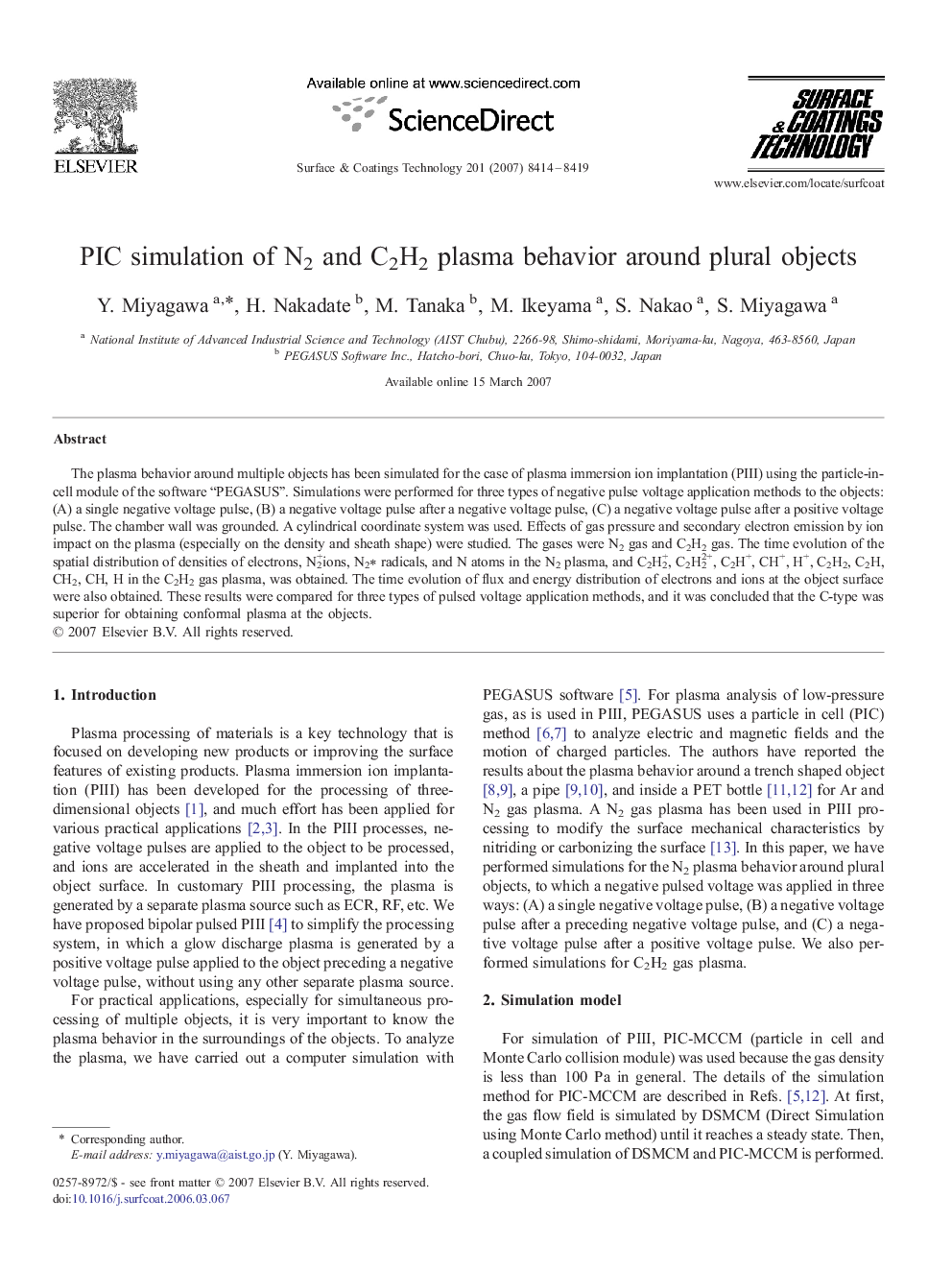| Article ID | Journal | Published Year | Pages | File Type |
|---|---|---|---|---|
| 1663033 | Surface and Coatings Technology | 2007 | 6 Pages |
Abstract
The plasma behavior around multiple objects has been simulated for the case of plasma immersion ion implantation (PIII) using the particle-in-cell module of the software “PEGASUS”. Simulations were performed for three types of negative pulse voltage application methods to the objects: (A) a single negative voltage pulse, (B) a negative voltage pulse after a negative voltage pulse, (C) a negative voltage pulse after a positive voltage pulse. The chamber wall was grounded. A cylindrical coordinate system was used. Effects of gas pressure and secondary electron emission by ion impact on the plasma (especially on the density and sheath shape) were studied. The gases were N2 gas and C2H2 gas. The time evolution of the spatial distribution of densities of electrons, N2+ions, N2â radicals, and N atoms in the N2 plasma, and C2H2+, C2H22+, C2H+, CH+, H+, C2H2, C2H, CH2, CH, H in the C2H2 gas plasma, was obtained. The time evolution of flux and energy distribution of electrons and ions at the object surface were also obtained. These results were compared for three types of pulsed voltage application methods, and it was concluded that the C-type was superior for obtaining conformal plasma at the objects.
Related Topics
Physical Sciences and Engineering
Materials Science
Nanotechnology
Authors
Y. Miyagawa, H. Nakadate, M. Tanaka, M. Ikeyama, S. Nakao, S. Miyagawa,
